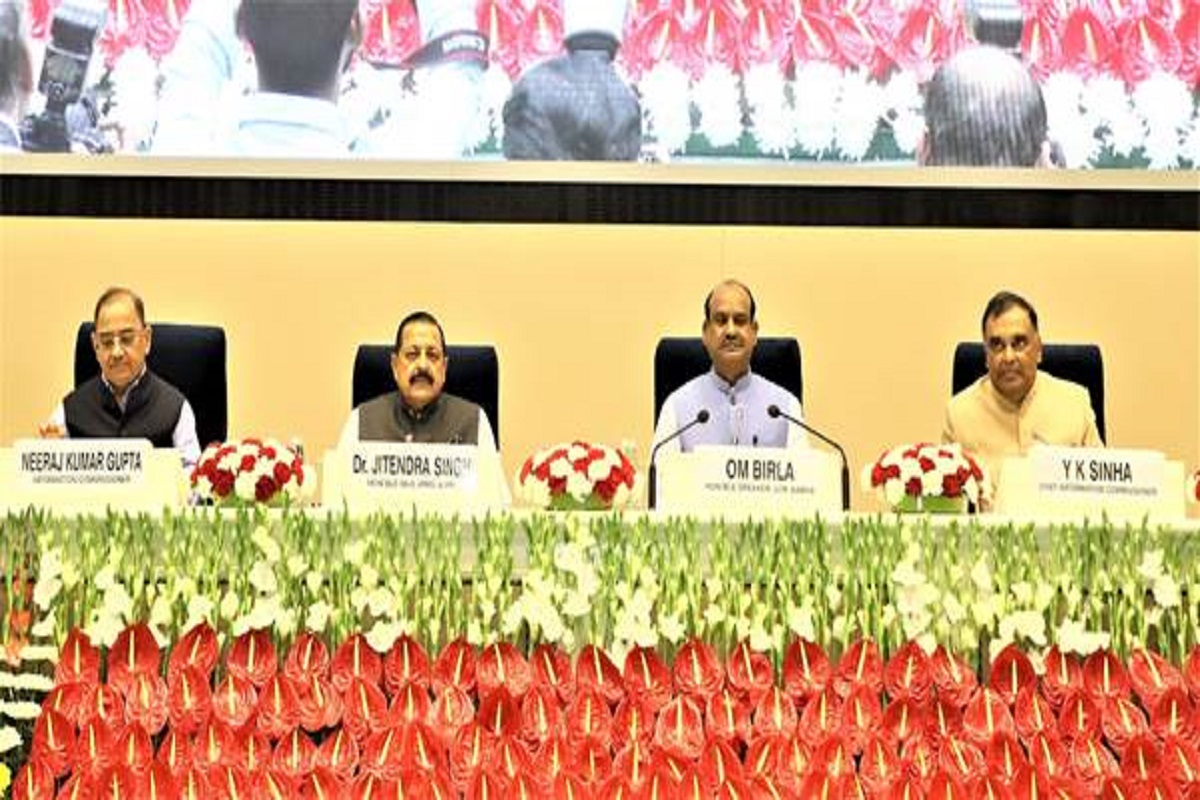Lok Sabha adjourned till 2 pm after Samajwadi MPs raise slogans, placards inside House
A major ruckus ensued in the Lok Sabha as Samajwadi Party leaders raised slogans and placards, forcing Speaker Om Birla to adjourn the House till 2 pm.
He was speaking at the 15th Annual Convention of Central Information Commission titled, “Azadi Ka Amrit Mahotsav: Citizen – centric Governance through RTI” at Vigyan Bhawan.
SNS | New Delhi | November 9, 2022 1:38 pm

Photo: PIB
The main aim of the Right to Information Act is to empower citizens, bringing transparency, getting system rid of corruption and taking the democracy to the hands of the people of the country in true sense, said Lok Sabha Speaker, Om Birla today.
He was speaking at the 15th Annual Convention of Central Information Commission titled, “Azadi Ka Amrit Mahotsav: Citizen – centric Governance through RTI” at Vigyan Bhawan.
Advertisement
Birla said that effective use of the RTI will help in building a developed and corruption-free India, as envisioned by the Prime Minister Narendra Modi.
Advertisement
Union Minister of State for Personnel, Public Grievances and Pensions, Dr Jitendra Singh who was also present, said, transparency and Citizen-centricity are the hallmark of the Modi governance model.
DR Singh said that empowered citizens are an important pillar of democracy and the Central Information Commission will continue to work for empowering the people through information.
“RTI Act is not a standalone law, but it is part of the larger narrative of strengthening Indian democracy, ensuring transparency in governance and building capacities of the common citizen to enable him to take informed decisions and choices,” added Dr Singh.
Above all, it is about nurturing the trust between citizen and the state – where both must have faith in each other, the Minister added.
Dr Singh noted that it was during the Modi government that a 24-hour portal service was introduced for e-filing of the RTI applications during any part of the day or night and from any part of the country or abroad.
He added that technology has been harnessed for developing mobile based applications, e-filing, e-hearing, e-notification etc., facilitating the task of information seekers in availing remedies under the law.
The mobile app developed by CIC enabled citizens to file appeals with ease, besides using technology for audio video hearing of cases.
The Minister said, as a result, the Central Information Commission has succeeded in reducing the pendency from 38116 cases in the year 2020-21 to 23405 cases in the year 2021-22.
Referring to indiscriminate filing of RTI applications in an era of Information Explosion, Dr Singh appealed to check before filing the application, whether the desired information is already existing in the public domain or not.
He elaborated that today all major decisions and information is in the public domain and we have achieved transparency with credibility.
Dr Jitendra Singh said, despite the challenges posed by the unprecedented pandemic, earnest efforts were made by CIC and SICs to dispose of RTI second appeals and complaints and some Commissions even exceeded pre-Pandemic figures of disposal during certain periods.
He also mentioned that June 2020 saw higher disposal of cases in CIC in comparison to pre-pandemic year of 2019. Dr Jitendra Singh also pointed out that it was during the challenging times of pandemic in May, 2020, the Central Information Commission started entertaining, hearing and disposing of RTIs from the newly created Union Territory of Jammu & Kashmir, through virtual means, after the passing of J&K Reorganisation Act 2019.
He said, applicants from J&K and Ladakh were allowed to file RTI applications from home and even for appeals to the CIC.
“The significant change now is that the non-domiciles and non-State subjects of Jammu & Kashmir will also now be entitled to file RTI related to Union Territory issues or agencies,” stated Dr Singh.
Advertisement
A major ruckus ensued in the Lok Sabha as Samajwadi Party leaders raised slogans and placards, forcing Speaker Om Birla to adjourn the House till 2 pm.
Leaders from all political parties gathered at Rishra Wellington Ground today to exchange Eid greetings after the namaz.
The delegation included Congress Deputy Leader of the Lok Sabha Gaurav Gogoi, Samajwadi Party's Dharmendra Yadav, DMK's A Raja, TMC’s Kalyan Banerjee, and NCP’s Supriya Sule.
Advertisement
